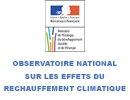Measuring and Preventing the Effects of Extreme Hot Weather: Improving Heat Regulation Ability in High-Risk Subjects.
Measuring and Preventing the Effects of Extreme Hot Weather: Improving Heat Regulation Ability in High-Risk Subjects.
Meteorological studies are anticipating climate change that will bring further periods of extreme hot weather combined with air pollution. At the same time, epidemiological studies of the effects of extreme hot weather are helping to identify the most at-risk groups, including the elderly, people suffering from heart disease or diabetes or people with a neuropsychiatric disorder who are taking antipsychotic drugs.
In order to devise a prevention strategy aimed at the vulnerable groups who will need first aid, we first need to understand the mechanisms that the human body uses to counteract excessive environmental heat, how these are defective in at-risk individuals, and how this deficiency can be remedied.
In order to do this, the following have been proposed:
- a clinical approach: In human beings experiencing a rise in internal temperature, physiological thermolysis mechanisms come into play, mainly via increased skin blood flow and perspiration. Vasodilation of cutaneous blood vessels occurs via the suppression of vasoconstrictive tonus, followed by a powerful vasodilatory mechanism, known as active vasodilation, which is also controlled by nerve impulses. We are aiming to develop a method for observing the effects of heat stress in man by using a suit infused with hot water and recording heart rate, blood pressure, skin blood flow and perspiration. A drug trial will then be carried out to test the effects of aspirin and paracetmaol on the above parameters against a placebo, to find out whether these compounds are able to slow down the effects of extreme hot weather in order to gain time before suitable prevention can be put in place.
- experimental studies: This is an initial attempt to look at problems associated with extreme hot weather. The study we are proposing relates to diabetes, as it is a risk factor in itself, added to which it is often accompanied by cardiovascular, renal and neurological complications. Diabetic mice and healthy mice will be exposed to a very hot environment. The heat setting will be adjusted until the mortality rate of the diabetic mice exceeds that of the healthy mice, which will act as a control. A drug trial using the same compounds as those given to human subjects (aspirin, paracetamol & placebo) will then be carried out in this environment. Other diabetic and healthy mice will be exposed to prolonged heat stress. Tiny blood vessels responsible for active vasodilation will be sampled as isolated organs and their vasomotor properties analysed. The cell cascades responsible for vasormotricity will be analysed.
- setting up a think-tank on the subject, which will organise a conference calling on the expertise of scholarly associations, the physiological society in particular. Informal meetings will be held before and after the conference to organise it and then reflect on its conclusions in terms of overall preventive strategy. We feel it will be important to combine ideas from life sciences with those from other disciplines concerned with managing the effects of extreme hot weather, which have already worked on the previous project. Subsequent clinical and experimental studies will then be able to take their observations into consideration.
Outcomes:
- Devising a methodology for observing the pathophysiological effects of extreme hot weather that can be applied in humans and can be used in future to test other hypotheses in addition to the one proposed in point 2.
- Understanding whether administration of antipyretics can diminish or slow down the effects of extreme hot weather in healthy subjects. A study of this nature could be repeated with at-risk subjects in the context of another project.
- Understanding whether these drugs could be used in diabetics to combat the effects of extreme hot weather. These findings should pave the way for a clinical trial such as the one proposed in point 2.
- Building up information about the precise vasomotor mechanisms at work during hot weather, which could pave the way for new research avenues into prevention of the risks associated with hot weather.
- Establishing a think tank on the pathophysiological effects of extreme hot weather and linking the discussions of the life science community with those of other scientific disciplines concerned with hot weather.
| Coordinators |
Jean Louis SAUMET, Université d’Angers – UER de Médecine, |
| Partnership |
Université d’Angers – Laboratoire de physiologie |
| Funding |
MEDD
|
| Budget |
36 000€ (including tax)
|




